Throughout my learning experience at AC Silver the battle of the “King’s shape” was one of the most joyful to conquer. I joined the team with no understanding of the base shape or form of cutlery and looked for sources to educate myself so I could ‘hold my own’ in a detailed discussion. After some wrong answers and assumptions I feel I can now use my knowledge to consult with customers and attempt conversations with my colleagues to try and aid their enforced love of silver.
A King’s shape spoon and King’s pattern spoon are the same thing
This is not accurate. A King’s shape piece has a stem with a shaped outline to the terminal, in a waisted manner. A King’s pattern spoon has a King’s shape but has defining features to make it true to this iconic pattern.
The only difference between King’s pattern and Queen’s pattern is the shell on the handle
Unfortunately not correct, the shell design can be considered as a factor in the grand reveal but the ‘device’ is the key feature to determine the difference. Through the combinations of concave and convex shells, in addition to flowers, honeysuckles and waisted hourglass designs, these unlock the answer to which of the three principal patterns you are witnessing: King’s, Queen’s and Hourglass.

King’s Pattern
- Notable feature/device: honeysuckle
- Shell design to anterior surface of handle terminal is concave
- Shell design to posterior surface of handle terminal is convex

Queen’s Pattern
- Notable feature/device: flower head and honeysuckle
- Shell design to both anterior and posterior surfaces of handle terminal are convex
- Also known as Rosette pattern
- This is the most decorative of the three principle King’s shape patterns

Hourglass Pattern
- Notable feature/device: hourglass
- Shell design to anterior surface of handle terminal is concave
- Shell design to posterior surface of handle terminal is convex
- This is the simplest style of the three patterns.
A true King’s pattern spoon always has a shell to the back of the bowl
A diamond heel is the most common of all the heels to the back of a King’s pattern piece with a union shell found on earlier examples. Despite the name the diamond heel does still incorporate a shell design emanating from the defining diamond/lozenge motif. A fun fact I recently discovered is the reverse terminal of the handle is often influenced by these two heel options, with the standard diamond heel being accompanied with a convex shell design and the union shell a concave; this variation can be overwritten to be the same as the pattern’s original classic form but the choice is up to the silversmith and pattern chosen.
A single struck King’s pattern determines the pattern is only shown to the anterior surface and often the reverse of the spoon bears only the hallmarks and potentially a plain rounded heel, reflecting the same form to that of an Old English or Fiddle pattern piece.
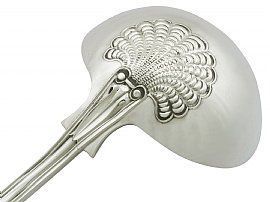
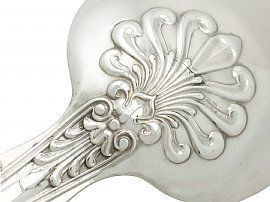
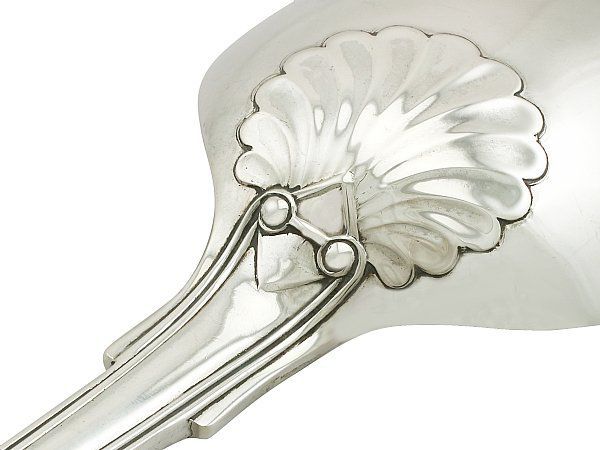
To throw a spanner in the works I am also able to provide the four simple words ‘anthemion’, ‘honeysuckle’, ‘husk’ and ‘oyster’. In the early 19th century the King’s Honeysuckle pattern brought about an extra honeysuckle device below the handle terminal and introduced a more flourishing and organic shape to the heel of the spoons and forks. The honeysuckle and anthemion designs reflecting a splayed lobed design and the husk taking a similar form to the shell however involved a more segmented incurved style to the traditional scallop design. The ornamentation referred to as oyster however did not take on the formation of a heel design, however was used across a wide postion of the back of each piece, making a highly imposing and impressive feature.
If you have any questions about flatware patterns or want to share your own ‘crowning achievement’ let us know, we would love to hear from you.

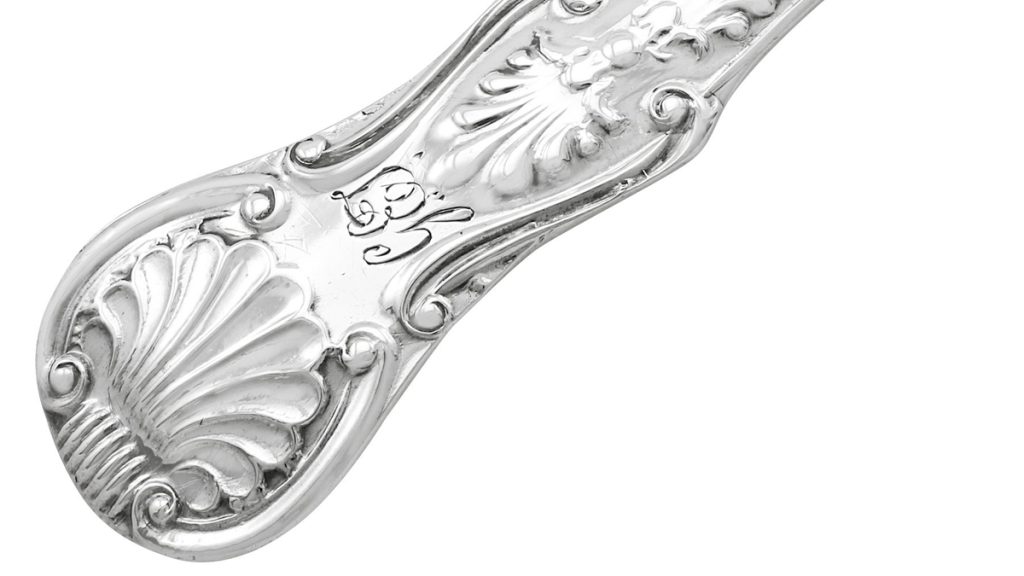

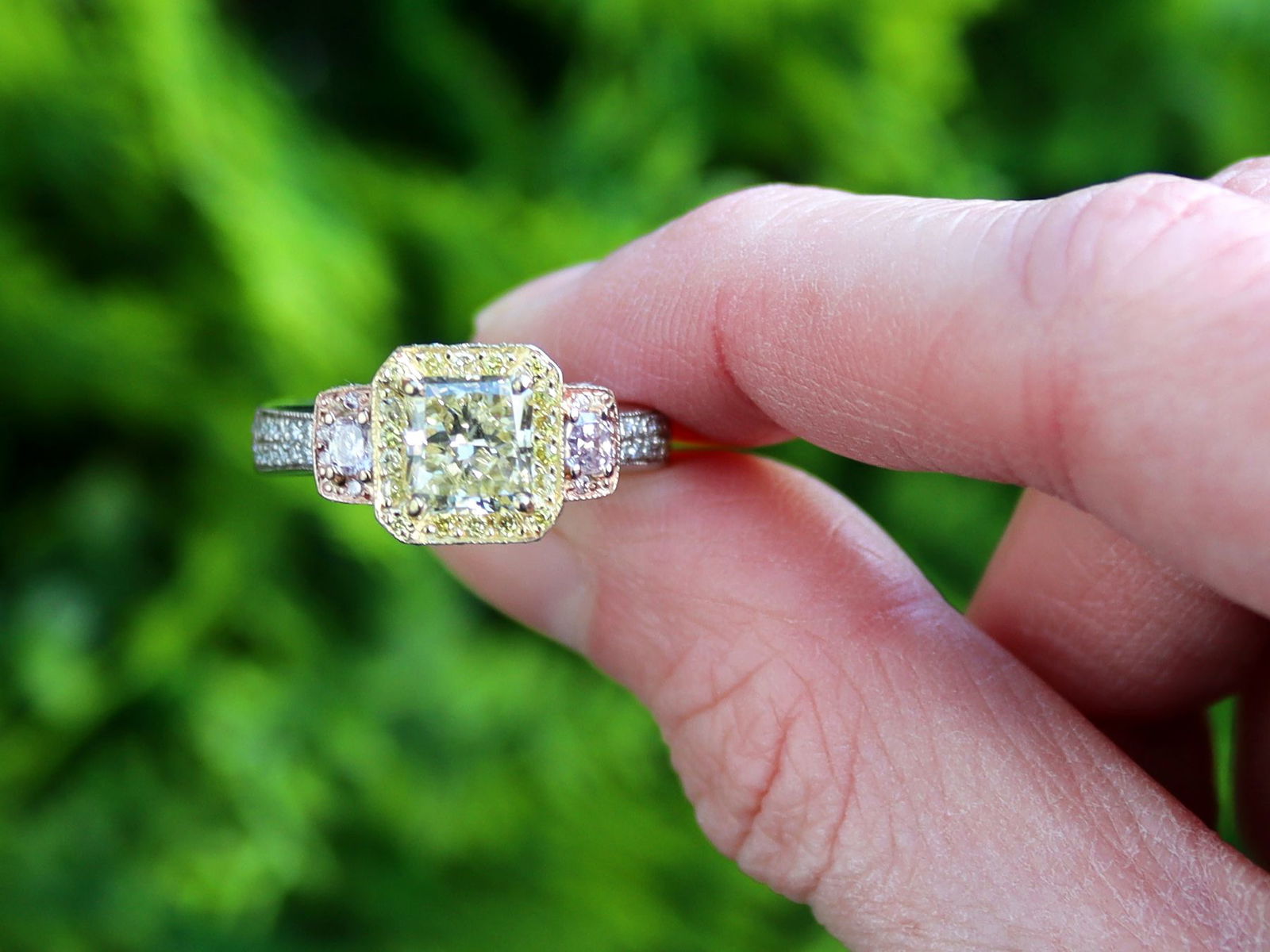

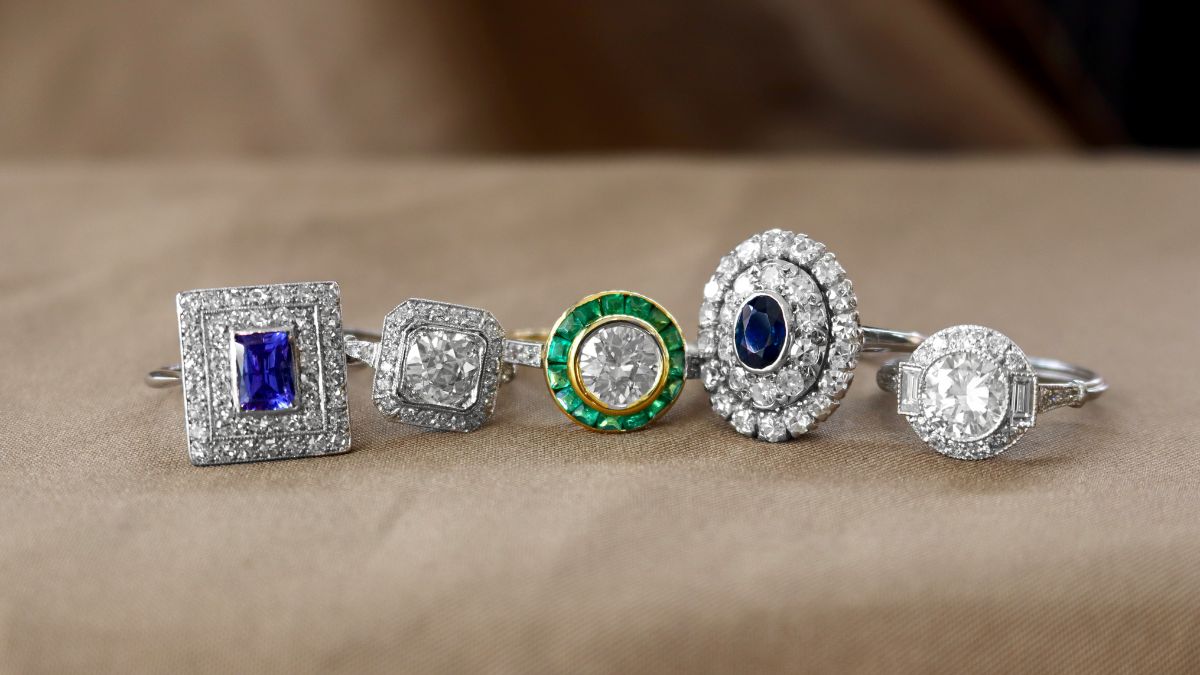
10 responses
The images you provide for the Queen’s and Hourglass patterns are the same. Otherwise, thank you for this informative article.
HI John, This will be resolved tomorrow. Glad you enjoyed the post.
I have an old silver Kings set. It has a small stamp on the back. Not sure if its silver plated or sterling. Any way of telling the difference. There is no 925 written. Strangely does not have the shell on the back of the spoon but on the handle yes.
To get your silverware tested I would advise you contact a local working jewellers who may have the facility to test metal type and quality.
Not all pieces will have a pattern to the heel, there have been many variants of these classing patterns made.
Thank you so much for the information given here. The differences between kings and queens pattern are explained well and add much interest to your pieces. Your teaching on different features of the silver and jewellery world are much appreciated and enjoyed.
Hi there, I have a set of Vintage Kings Sheffield silverplate tea spoons which seem to be a little different than the standard diamond heel design, are you able to send me an email address so I can forward you a picture or two so as to help me date the set?
Regards,
Hi Brendan, we don’t offer that service however the below may help
http://www.silvermakersmarks.co.uk
http://www.925-1000.com
http://www.silvercollection.it
Thank you so much for the clarity of your descriptions and photos. I thought I had a Kings pattern but now see it is the Queens.
I still have further difficulty in determining the maker and year with perhaps James Dixon and & Son(s) being likely. Also there appears to be a monogram engraved on the front which I’d like to know about.
Thanks again.
Glad you found this useful
For hallmark identification the following sites may provide an insight:
http://www.silvermakersmarks.co.uk
http://www.925-1000.com
http://www.silvercollection.it
I have a few pieces of what I believe to be Kings pattern , marked Gotham with an anchor – silver plate ? No sterling mark !
Thanks much !! ☺️